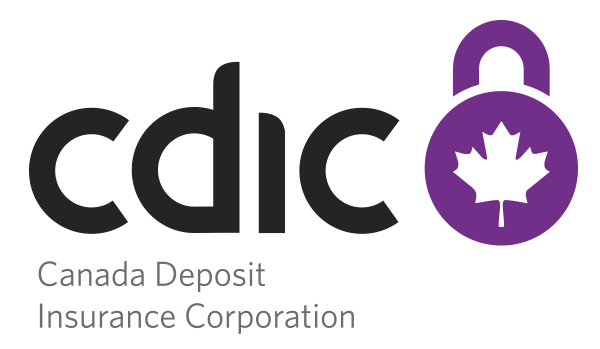The Canada Deposit Insurance Corporation (CDIC) is a federal Crown corporation, which means it’s owned by the federal government yet structured as a private company. Other examples of federal Crown corporations include the Canadian Broadcasting Corporation (CBC), Canada Post, and VIA Rail. Unlike many other Crown corporations, however, the CDIC does not use public funds to operate. Member institutions, such as banks and federal credit unions, fund the CDIC through paid premiums.
What does the CDIC do, exactly?
The CDIC protects your money in the event of a bank failure, which is another way of saying when a bank, federal credit union or loan and trust company can no longer stay in business. Instead of losing all your money in this situation, the CDIC has your deposits covered—up to $100,000 per protected category, per institution—as long as your financial institution is a member. You can find out if the CDIC has your money covered by visiting cdic.ca or the website of your chosen financial institution(s).
CDIC protection isn’t just for cash in your chequing or savings accounts. It also extends separately up to $100,000 to eligible deposits made into each of several categories such as Registered Education Savings Plans (RESPs) and Registered Disability Savings Plans (RDSPs).
Safeguarding your money when member institutions can’t
There is no cost to you for CDIC protection. No matter who you are, how you earn your money or even how you deposit your money, the CDIC is in place to safeguard your hard-earned savings. In fact, the corporation was founded to ensure financial stability for Canadian families and the greater economy.
Since its establishment in 1967, the CDIC has handled the failure of 43 financial institutions. These failures impacted the deposits and savings of roughly two million Canadians. Not one of these people lost a single dollar under CDIC protection.
If a member institution does fail for any reason, the CDIC ensures you have access to your funds—plus any eligible interest—within days. And you don’t have to do anything; the CDIC will contact you directly to begin the process.
Learn more at CDIC.ca: Protecting your deposits
What kinds of deposits are protected?
Member institutions with the CDIC offer free and automatic protection on multiple savings products—no extra paperwork is necessary. Eligible deposits include savings and chequing accounts and term deposits, among other products that are held in personal or jointly-owned accounts, trust funds, Tax-Free Savings Accounts (TFSAs), RRSPs and RRIFs. As mentioned, your eligible contributions to your child’s RESP are also protected, as well those deposited into registered savings for a family member with a disability (RDSP). Each eligible account you hold with a member bank, federal credit union or loan and trust company is protected up to $100,000.
Examples of products that aren’t covered are stocks, Exchange-Traded Funds (ETFs) and cryptocurrencies.
Learn more at CDIC.ca: How deposit insurance works
See if your financial institution is a member of the CDIC
Knowing where to put your money so that it’s protected is as easy as looking up your financial institution(s) online. Visit their website to see if they are participating members—look for the CDIC’s purple logo with a padlock. Or, type the name of your financial institution directly into the CDIC’s List of Members.









